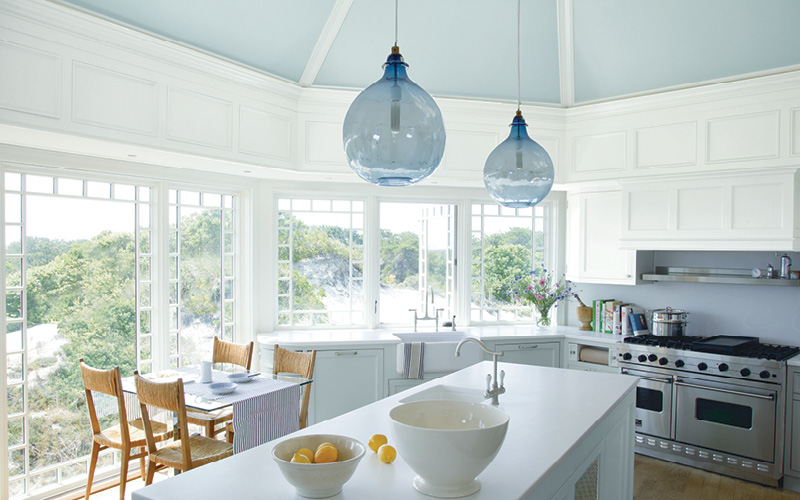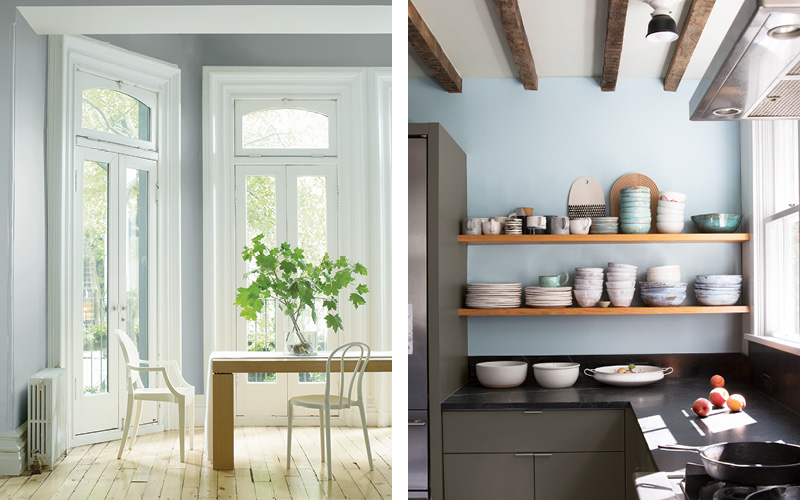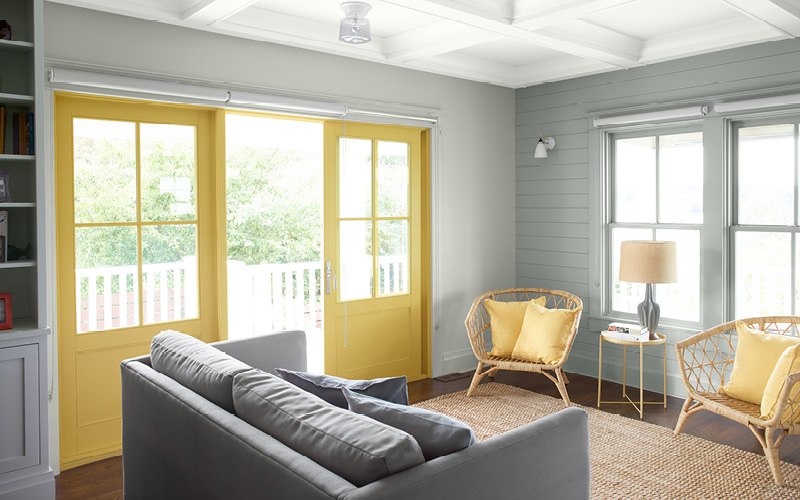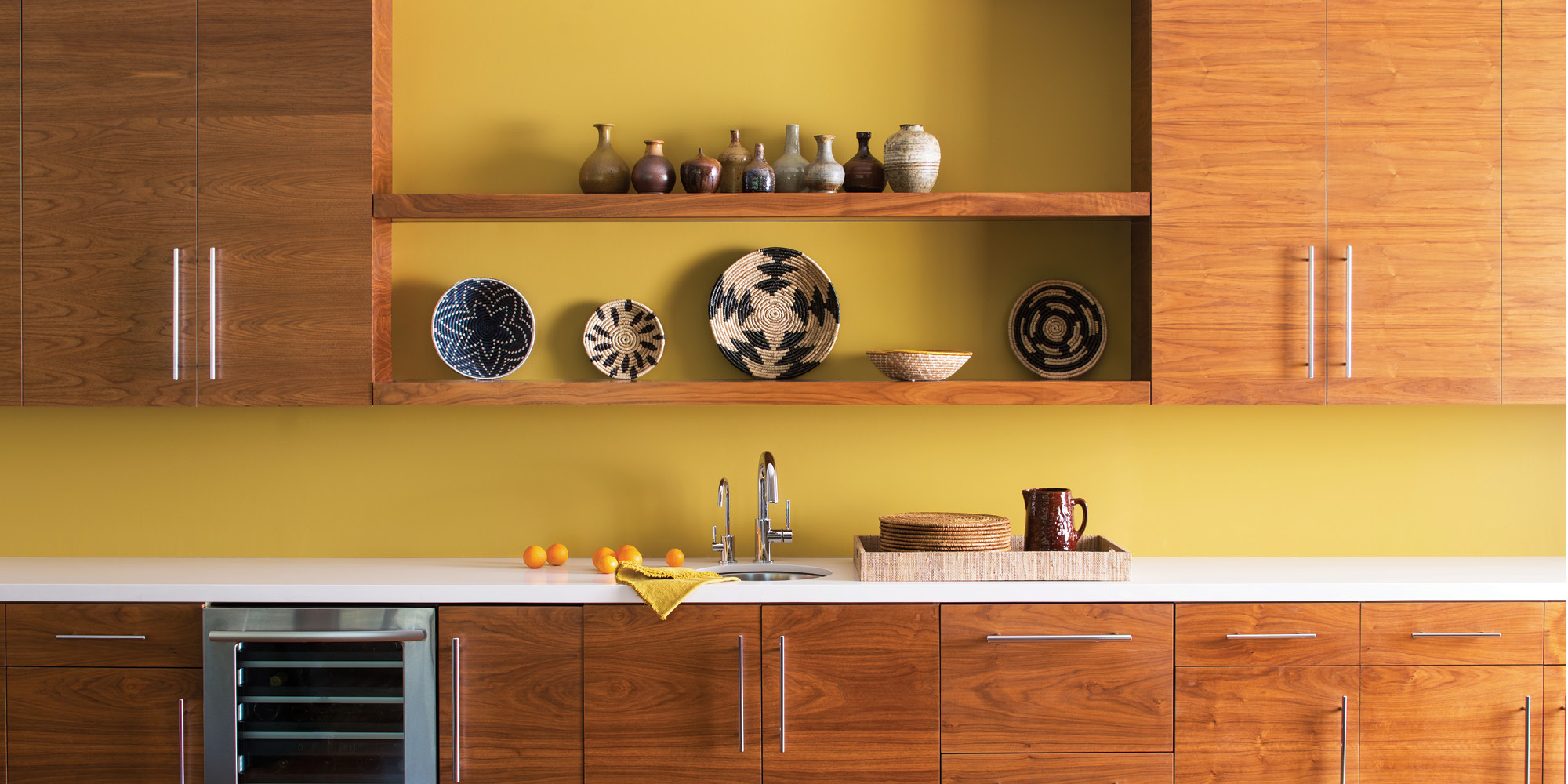19661 96 Ave., Langley, BC V1M 3C9
A Guide To Sheen
Paint sheen is more than a preference.
It's an indicator of a paint's utility and how you'll live with that paint every day.
Sheen will affect the look and style of the paint colour, but it will also change how the paint hides or highlights imperfections, how well it stands up to marks, moisture and stains and how easy or difficult it is to clean.
To choose the right paint for your project, you need to identify the right sheen, so we've put together this extended Sheen Guide of terms and definitions to help you better understand the differences and implications of each.
What Is Sheen?
Sheen is the amount of light that’s reflected off the surface of a paint. Sheen and gloss are often used to refer to the same thing, but technically sheen is measured by bouncing a light off a paint’s surface at an 85-degree angle, while gloss is measured by bouncing a light off the paint’s surface at a 60-degree angle.
Benjamin Moore typically uses the term “sheen” to describe how much of this reflective quality is in a paint, with sheens that range from dull to shiny. The sheens with the least reflective surfaces start at matte and flat and then go to eggshell, low lustre, low sheen, satin, pearl, semi-gloss and high gloss. The more light that’s reflected on the paint’s surface, the higher the sheen. Higher sheen paints, like semi-gloss and high gloss, stand up better to damage from moisture, as well as wear and tear, and so high-sheen paints are often used in bathrooms and on high-traffic trims, like baseboards. Lower sheen paints, like matte and eggshell, hide imperfections better, because the light doesn’t bounce off changes in texture. Low sheen paints are more difficult to clean than a high gloss and are best suited to low-traffic areas for this reason. A paint’s sheen can also be called its finish, as in, what it looks like when it has finished drying.

Lustre or Gloss
In paint, when people use the term gloss or lustre, they are talking about the paint’s shine, or the amount of light that’s reflecting off the surface of a paint. Paint finishes are organized by sheen, or the amount of gloss they have, and this greatly affects the look, durability, maintenance, application and use of a paint.
Matte or Flat
Matte or flat is a paint finish, or sheen, with little-to-no shine or gloss on its surface after it has been applied. Instead of reflecting light like other sheens, flat/matte paint absorbs it. This makes it excellent for hiding brush strokes, marks and imperfections in walls and ceilings. Flat paint is the hardest to clean, and so it’s best suited for low-traffic areas where spills and dirt aren’t a constant threat: bedrooms, living rooms, and hallways are all great examples. A flat or matte sheen contains a percentage of gloss that’s between 1-9%.
Ultra Flat
This is an even flatter, more light-absorbing version of a standard flat/matte paint. It has zero gloss and has a rich and luxurious matte texture and depth. Just like with a matte finish, ultra flat is fantastic at covering imperfections in the paint and on surfaces. It’s difficult to clean, touch-ups are very challenging to blend in, and not tending to spills or stains right away could result in the whole wall having to be repainted. The sophisticated look of an ultra flat, and its ability to hide imperfections, makes it a popular choice for bedrooms, ceilings and living rooms, even if it is more high maintenance.

Eggshell
A real-life eggshell is an accurate reference here, as eggshell is a flat finish with just a touch of gloss. (The gloss level in an eggshell finish is between 10 and 25%.) It’s the next glossy step up from flat/matte and is a bit more durable, but it behaves in much the same way as a matte. It’s harder to clean than a glossy paint, but it’s good at hiding imperfections in low-traffic areas. Choosing between the two sheens would be a matter of preferred taste and maintenance.
Low Lustre or Low Sheen
Closely related to satin and eggshell, low lustre is a paint finish with a hint of shine that reflects of the paint’s surface. It’s still low gloss but typically has a slightly higher sheen than eggshell. A low lustre sheen resists stains and is easier to clean than matte paint. As a percentage, low lustre has between 10-25% gloss.
Satin / Pearl
This is a paint sheen very similar to eggshell in that it has a low shine to it (between 25% to 35% gloss), but it’s known for having a creamy, velvety look. Satin, also referred to as pearl, needs to be applied carefully as it will show every mistake or errant brush stroke. After painting, this finish needs about six or seven days to dry before you’ll see its true colour. On the plus side, it’s very easy to clean and a great paint option for high-traffic hallways, entrances, mud rooms, games basements and kids’ rooms.

Semi Gloss or Low Gloss
This is a paint finish that reflects light with a noticeable sheen. It has a glossier quality than flat, matte, eggshell, satin, pearl and low lustre, and a gloss measurement of around 35% to 70%. The benefits of a semi-gloss are that it is highly durable (it resists stains well) and easy to clean—so it’s perfect for high traffic areas in the home: kitchens, bathrooms, trim work, molding, dining rooms and cabinets are all great spots for semi-gloss paint. Good for both indoors and out.
High Gloss
High Gloss is the shiniest paint finish that reflects the most light of all the sheens. It’s the easiest to clean, the most durable, stain resistant and water-resistant. It’s perfect for bathrooms, kitchens, dining rooms and outdoor spaces that experience a lot of traffic, moisture, weather, and wear and tear. The downside of high gloss is that it is highly reflective and therefore shows off every mark, every blemish. As a percentage, high gloss contains 70-89% gloss.
EXPERT ADVICE
Need a Little Help Choosing the Right Sheen?
If you have any questions about sheen, contact us anytime.
We are here to help!
Contact Us


